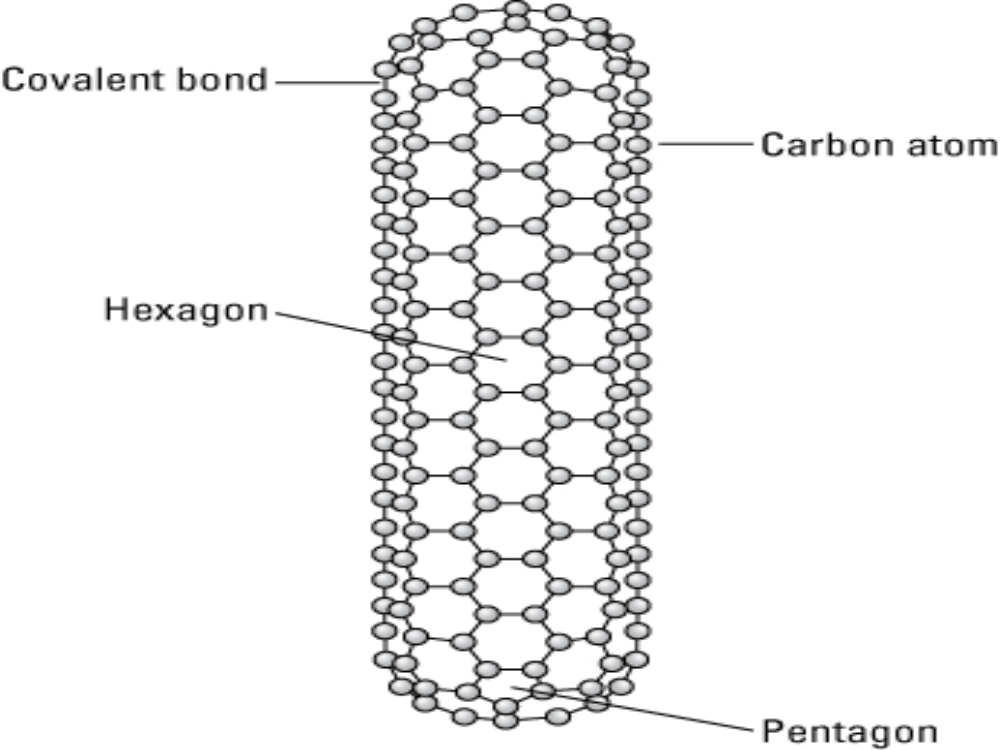Ⅰ. Introduction
Within the expansive world of nanotechnology, carbon nanotubes conductivity (CNTs) stand out as revolutionary, with potential to transform electronics and material science. Discovered in the early 1990s, these tiny tubular structures, made of carbon atom sheets, showcased unique electronic properties. Central to their appeal is their remarkable conductivity, allowing them to function as metals, semi-metals, or semiconductors based on their structure. Such versatility is rare and grants CNTs unparalleled application flexibility. This article delves into carbon nanotube conductivity’s role in advancing technology, from reshaping electronics to influencing renewable energy. Join us on this exploration of a future powered by CNT conductivity.
Ⅱ. Understanding Carbon Nanotubes

At the forefront of nanotechnology breakthroughs, carbon nanotubes (CNTs) stand as microscopic marvels that have ushered in a new era of potential. To truly grasp their significance, one must first understand their basic structure and the types available.
A carbon nanotube can be visualized as a single sheet of carbon atoms, akin to a sheet of graphite, meticulously rolled into a tube. Each carbon atom binds to three other carbon atoms, forming a hexagonal lattice pattern. This cylindrical configuration, combined with the strength of the carbon-carbon bonds, endows the CNTs with exceptional mechanical, thermal, and, most notably, electrical properties.
Diving deeper into their classification, there are primarily two types of carbon nanotubes: single-walled carbon nanotubes (SWCNTs) and multi-walled carbon nanotubes (MWCNTs). As the names suggest, SWCNTs consist of a single layer of carbon atoms arranged in a tube, while MWCNTs feature multiple concentric tubes nestled within one another. This variation in structure significantly influences their properties and, consequently, their applicability in various domains.
The intrinsic properties of carbon nanotubes contributing to their remarkable conductivity can be attributed to the seamless arrangement of carbon atoms and the nature of the carbon-carbon bonds. Electrons in CNTs move freely along the tube’s axis, experiencing minimal scattering, which leads to high electrical conductivity. Additionally, the confined structure of the nanotubes means that electrons follow quantum pathways, resulting in phenomena like ballistic transport, where electrons traverse long distances without any scattering events.
The allure of carbon nanotubes is not merely their size but the exceptional properties they bring to the table. Their unique structure, combined with the versatility offered by the different types of CNTs, paves the way for advancements in fields demanding superior conductivity.
III. The Science of Conductivity in Carbon Nanotubes
Electrical conductivity, at its essence, represents the capacity of a material to allow electrons to flow effortlessly. In the context of carbon nanotubes (CNTs), this conductivity is notably heightened due to the unique arrangement and interaction of carbon atoms within the tubular structure.
A key factor in determining the conductivity of CNTs is their “chirality” – the specific orientation or twist of the carbon atom hexagonal lattice when formed into a tube. Different chiralities lead to varying electronic properties, with some nanotubes behaving as metals, while others adopt semiconducting properties. This intrinsic variability allows for an expansive range of applications based on the specific conductivity requirements of a project.
However, like all materials, CNTs are not without their vulnerabilities. Defects in the nanotube, often due to imperfect synthesis processes, can impede electron flow and degrade conductivity. Such imperfections might include breaks in the carbon lattice or misplaced atoms. Additionally, environmental influences, such as temperature fluctuations and chemical exposures, can further affect the conductive performance of CNTs.
Compared to other materials, CNTs are exceptional conductors. Traditional metals, like copper, have long been the standard for electrical conductivity. Yet, in terms of electron mobility and minimal resistivity, especially at nano scales, carbon nanotubes conductivity outshine many metals. Their lightweight nature combined with their high conductivity makes them valuable in applications where weight and efficiency are paramount, such as aerospace technologies.
The conductivity of carbon nanotubes is not just a product of their unique carbon arrangement, but also the result of specific structural and external factors. Their performance, especially when juxtaposed with other materials, showcases their immense potential in the realm of advanced technologies.
Ⅳ. Carbon Nanotubes in Electronics

In the evolving world of electronics, carbon nanotubes (CNTs) have carved a niche for themselves, primarily due to their distinct conductivity properties. At the heart of modern electronic devices lies the need for components that are both efficient and miniaturized. CNTs, with their unique conductivity, step up to meet this demand, especially in semiconductor devices. Their ability to act as metals, semi-metals, or semiconductors, based on their chirality, provides manufacturers a versatile material to tailor specific electronic functionalities.
The rise of flexible and wearable electronics signifies a new horizon for technology, where the rigidity of conventional materials poses challenges. Enter CNTs. Their lightweight, flexible nature combined with high conductivity makes them the material of choice for such innovations. From flexible screens to wearable health monitors, the adaptability of CNTs ensures that electronic devices can be molded to fit diverse forms without compromising performance.
High-performance electrical circuits, the backbone of advanced electronic devices, demand materials that can handle rapid electron transfer with minimal energy loss. CNTs, with their extraordinary electron mobility and low resistivity, are poised to redefine the boundaries of circuit efficiency. Their integration into circuits results in faster processing speeds, reduced heat generation, and enhanced battery life in devices.
V.Enhancing Material Properties with Carbon Nanotubes

Carbon nanotubes conductivity (CNTs) are revolutionizing the way we perceive material properties, going beyond the domain of electronics and delving into a myriad of other applications.
In the aerospace and automotive sectors, the weight and strength of materials are of paramount importance. Incorporating CNTs into composites has shown potential in achieving an elusive combination: lightweight structures without compromising on strength. The inherent strength of CNTs, derived from their carbon-carbon bonds, imparts enhanced tensile strength to these composites. As a result, we observe aircraft components and car parts that resist wear and tear while reducing the overall weight, enhancing fuel efficiency and performance.
Beyond mechanical strength, the thermal properties of CNTs are proving transformative. Every material, from the metal in a jet engine to the plastic in a car dashboard, has to manage heat effectively. CNTs, with their superior thermal conductivity, are becoming integral in designing materials that dissipate heat swiftly and efficiently. This enhancement is critical, especially in aerospace applications, where temperature fluctuations can be extreme.
Lastly, the world of energy storage is witnessing groundbreaking innovations, largely driven by the unique attributes of CNTs. Batteries and capacitors, the cornerstones of energy storage, are seeing leaps in their performance metrics. By integrating CNTs into their design, these devices exhibit increased charge storage capacities and faster charge-discharge rates. This not only augments the life-span of these devices but also brings forth possibilities like quick-charging electric vehicles and high-capacity portable electronics.
VI. Carbon Nanotubes in Energy Solutions

The quest for efficient energy solutions has led researchers to tap into the remarkable attributes of carbon nanotubes conductivity (CNTs), unlocking a spectrum of applications that could shape our sustainable future.
One promising avenue is solar energy. Traditional solar cells, while effective, have limitations in terms of energy conversion efficiency. Incorporating CNTs into these cells has introduced a paradigm shift. Due to their exceptional electron transport properties, CNTs facilitate a quicker and more efficient movement of charge carriers, minimizing energy losses. The result? Enhanced energy conversion efficiency, potentially leading to solar panels that produce more power from the same amount of sunlight.
Parallelly, the realm of fuel cells is undergoing its own transformation, thanks to CNTs. These cells rely on electrochemical reactions to produce energy, and the performance intricately depends on the electrode materials used. CNTs, with their high surface area and excellent conductivity, are proving to be superior electrode materials. They offer not only better electron transport but also provide more reaction sites, boosting the overall electrochemical performance. This enhancement could be the key to developing fuel cells that last longer and deliver more power, bridging the gap between fossil fuels and cleaner energy alternatives.
Looking ahead, the potential of CNTs extends to the very backbone of our energy systems: transmission and grids. As we strive to create grids that can handle the influx of renewable energy and the demands of modern infrastructure, the conductivity and strength of CNTs may offer solutions. From more efficient transmission lines to smart grids that adapt in real-time, CNTs could redefine how energy is distributed and consumed.
VII. Challenges and Environmental Considerations

The transformative potential of carbon nanotubes (CNTs) is undeniable. However, as with any innovative material, its journey from research labs to mainstream application isn’t devoid of challenges. One primary hurdle is the intricacies involved in manufacturing and integrating CNTs. Achieving uniformity, controlling the chirality, and scaling up production processes while maintaining quality can be daunting. Moreover, integrating these nanostructures into existing systems and materials requires meticulous engineering to ensure compatibility and functionality.
Simultaneously, concerns about the environmental and health implications of CNTs have emerged. Given their nanoscale size, there’s anxiety about their bio-persistence, akin to concerns surrounding asbestos. The potential for inhalation and subsequent respiratory implications is an area of ongoing study. Beyond human health, the environmental impact, especially concerning the disposal and degradation of CNT-based products, remains a topic of discussion. As these nanotubes find their way into various applications, understanding their long-term environmental trajectory becomes imperative.
Recognizing these concerns, regulatory bodies worldwide are in the process of drafting guidelines and standards. These not only pertain to the safe manufacturing and handling of CNTs but also address disposal and recycling protocols. Current best practices emphasize thorough safety assessments, robust protective measures during handling, and continuous monitoring to ensure worker and environmental safety.
VIII. The Future of Carbon Nanotube Conductivity

As the curtain rises on the future of nanotechnology, carbon nanotube (CNT) conductivity stands center stage, heralding a new era of possibilities. Emerging research paints a picture of a world where the novel electrical properties of CNTs can be harnessed in ways we’re only beginning to imagine.
One of the most compelling trends in this domain is the endeavor to achieve more precise control over the chirality and alignment of CNTs. By doing so, researchers aim to tailor the conductivity of these tubes to specific applications, allowing for more versatile use. For instance, perfectly aligned CNTs can potentially offer ballistic conduction, where electrons travel without scattering, leading to ultra-efficient electronic devices.
Beyond traditional electronics, potential breakthroughs loom large in sectors we’ve just begun to tap. Imagine smart textiles that leverage the conductivity of CNTs to monitor health metrics or respond to environmental stimuli. Consider the realm of biomedicine, where CNTs could be employed to develop bio-sensors with unparalleled sensitivity.
But perhaps the most tantalizing prospect lies in the next generation of materials. Composite materials imbued with CNTs, given their impressive conductivity and strength-to-weight ratio, could redefine modern architecture, transportation, and even aerospace engineering. These materials, more durable, lightweight, and efficient, could lead to energy-saving buildings, faster transportation modes, and more fuel-efficient aircraft.
IX. Conclusion
In the expansive landscape of nanotechnology, few elements have garnered as much attention and promise as carbon nanotube (CNT) conductivity. From its inception in the early 1990s to its present-day implications, this phenomenon has hinted at a future both transformative and profound. Whether in electronics, energy solutions, or the creation of advanced materials, the conductivity of CNTs has opened doors to innovations once deemed the stuff of science fiction.
What makes CNTs truly remarkable is not just their innate properties but the myriad ways these properties can be harnessed and fine-tuned. As we’ve journeyed through the applications and potential of CNTs, it’s evident that their impact extends far beyond a singular domain. Instead, they weave a tapestry of interconnected advancements that span across sectors, promising efficiency, sustainability, and unprecedented performance.
The road ahead, illuminated by ongoing research and development, beckons with possibilities. Each experiment, each discovery, brings us one step closer to realizing the full potential of CNTs. It’s a testament to the importance of continual exploration in this field, for with every breakthrough, we rewrite the boundaries of what’s achievable.
As we stand on the precipice of a new era, it’s essential to reflect upon the vast potential of carbon nanotubes. They represent more than just a technological marvel; they symbolize humanity’s relentless pursuit of knowledge and progress. In CNTs, we find a beacon of hope, suggesting that the materials of tomorrow will not only be more advanced but will also cater to a world that is sustainable, efficient, and boundlessly innovative. As we look forward, the horizon is bright, with carbon nanotube conductivity lighting the way.
X. FAQs
1.What exactly is carbon nanotube conductivity?
Carbon nanotube conductivity refers to the ability of carbon nanotubes (CNTs) to transmit electric current. Derived from their unique atomic structures, CNTs can demonstrate various conductive behaviors, ranging from metallic to semiconductive, based on their specific configuration.
2.Why is the conductivity of CNTs significant?
The unique and diverse conductive behaviors of CNTs make them suitable for a vast array of applications, from electronics to energy solutions. Their flexibility in conductivity, not commonly found in other materials, offers unparalleled adaptability in technological advancements.
3.Are there different types of carbon nanotubes?
Yes, CNTs are primarily categorized into single-walled and multi-walled nanotubes. Their structural differences result in varying electronic properties, which in turn influence their specific applications and conductive behaviors.
4.What’s the current state of CNT applications in technology?
Carbon nanotubes have found their way into multiple domains, including electronics, energy solutions, and material enhancement. They are being used to improve the efficiency of solar cells, enhance the performance of semiconductors, and strengthen composite materials for aerospace and automotive industries, among others.
5.What do experts predict about the future of CNTs?
While it’s challenging to pinpoint exact trajectories, experts are optimistic about the expanding role of CNTs in future technologies. Ongoing research indicates potential breakthroughs in energy transmission, advanced material development, and even medical applications.
